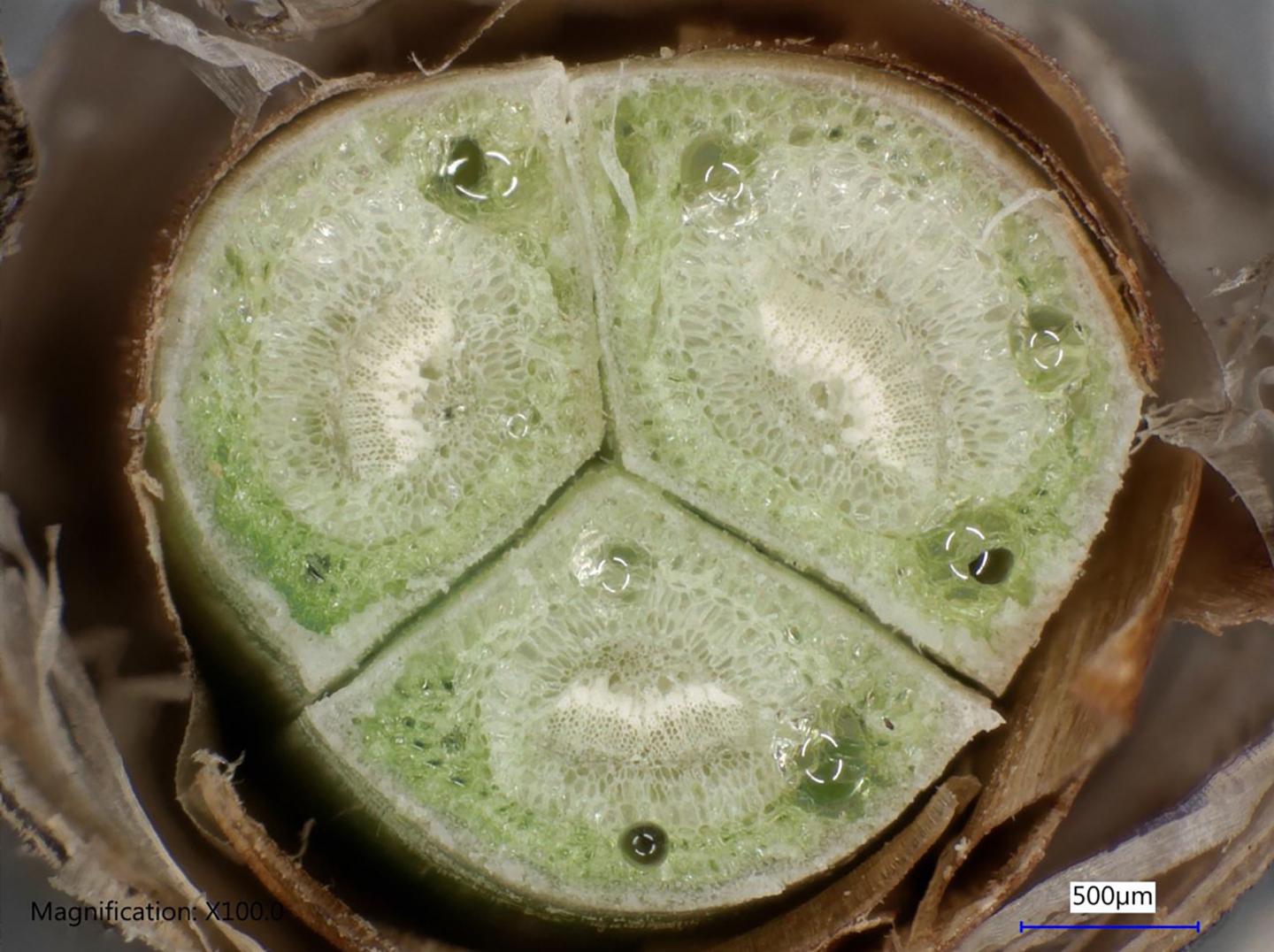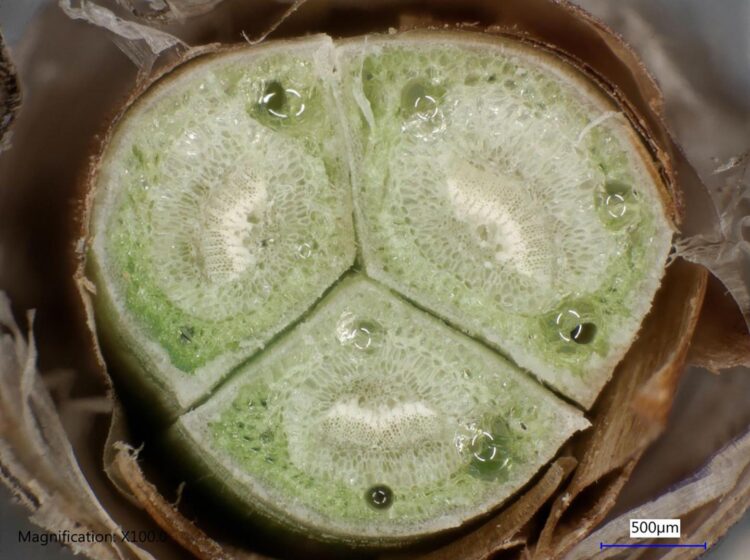Exploring the effect of rainfall on pine needles may lead to future fibers that are extremely water-repellent.

Credit: Lebanoff and Dickerson, UCF
WASHINGTON, September 29, 2020 — If you have ever hiked in the woods and been surrounded by the sight and smell of pine trees, you may have taken a closer look at pine needles and wondered how their shape, material properties, and surface wettability are all influenced by rainfall.
In Physics of Fluids, from AIP Publishing, researchers at the University of Central Florida are currently probing how well pine needles allay the impact of rain beneath the tree. Andrew K. Dickerson and Amy P. Lebanoff explored the impact of raindrops onto fixed, noncircular fibers of Pinus palustris, aka the longleaf pine, by using high-speed videography to capture the results.
“Drops impacting fixed fibers are greatly deformed and split apart,” said Dickerson. “As expected, the breakup of the drop and the force felt by the fiber is dependent on drop size and speed.”
Impact force and the shape of the resulting lobe of water also depending on the shape of the fiber exposed to the oncoming drop.
“So we changed the shape of the fiber exposed to the drop by rotating it 180 degrees,” he said. “Our fibers, which are wedge-shaped, appear to be better at water shedding compared to circular fibers of similar size and under similar impact conditions.”
This work is believed to be the first to consider drop impact on noncircular fibers within a field that is full of studies of impact on circular fibers.
“We’re able to draw contrasts in fluid behavior, compared to circular fibers, and witness behaviors not yet documented,” Dickerson said. “I was surprised how different the lobes formed by impacting drops look when the fiber changes orientation. Furthermore, our fibers retain less water than circular fibers.”
From an evolutionary standpoint, this is advantageous, because water on the surface of pine needles arrests photosynthesis by blocking stomata, gas exchange pores.
The researchers hope their work is “a step forward in understanding how pines, arguably the most ubiquitous tree family in civilization, evolved alongside rainfall within their environment,” said Dickerson. “How have pines evolved to cope with aggressive rainfall? Part of the answer may lie within the cross-sectional profile of their needles.”
Their work also suggests moisture capture — capturing raindrops or other types of moisture — may be tunable by fiber shape, which could open the door to future fibers that are extremely repellent.
###
The article, “Drop impact onto pine needle fibers with non-circular cross-section,” is authored by Amy P. Lebanoff and Andrew K. Dickerson. It will appear in Physics of Fluids on Sept. 29, 2020 (DOI: 10.1063/5.0019310). After that date, it can be accessed at https:/
ABOUT THE JOURNAL
Physics of Fluids is devoted to the publication of original theoretical, computational, and experimental contributions to the dynamics of gases, liquids, and complex fluids. See https:/
Media Contact
Larry Frum
[email protected]
Related Journal Article
http://dx.





